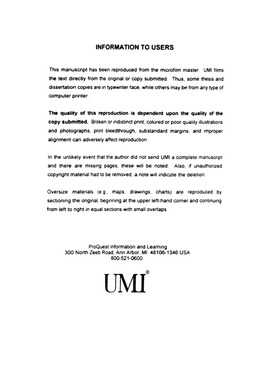| dc.contributor.advisor | Luo, Yigi, | en_US |
| dc.contributor.author | Wan, Shiqiang. | en_US |
| dc.date.accessioned | 2013-08-16T12:18:49Z | |
| dc.date.available | 2013-08-16T12:18:49Z | |
| dc.date.issued | 2002 | en_US |
| dc.identifier.uri | https://hdl.handle.net/11244/531 | |
| dc.description.abstract | I also examined the potential responses of C and N processes to elevated temperature. The results suggest that there was a time lag between the response of peak aboveground biomass (AGB) and that of net N mineralization. The differential responses and a negative feedback between C and N processes could lead to the interannual variability of net primary production and limit long-term C uptake by ecosystems. | en_US |
| dc.description.abstract | Changes in microclimate were quantified with an attempt to address the effectiveness of infrared heaters in simulating climatic warming in the real world. Overall, infrared heaters simulated climate warming well by enhancing downward infrared radiation and by reducing the diurnal air temperature range. | en_US |
| dc.description.abstract | This comprehensive research project was designed to examine the potential responses of a tallgrass prairie in the US Great Plains to global warming under two land use scenarios. A factorial design was used with warming as the primary factor nested with clipping. Infrared heaters were used to simulate climatic warming and clipping was used to mimic mowing for hay or grazing. | en_US |
| dc.description.abstract | Climatic warming has social-economic impacts. The responses of an allergenic species, western ragweed (Ambrosia psilostachya DC.), to experimental warming and clipping were investigated. Although warming caused no difference in pollen production per stem, total pollen production increased by 84% (P < 0.05) because there were more ragweed stems. Experimental warming significantly increased pollen diameter from 21.2 mum in the control plots to 23.9 mum in the warmed plots (a 13% increase). The results from our experiment suggest that global warming could aggravate allergic hazards and thereby jeopardize public health. (Abstract shortened by UMI.) | en_US |
| dc.description.abstract | Differentiating between the direct and indirect effects of elevated temperature on net primary production will substantially improve our understanding of the mechanisms by which global warming affects carbon (C) cycling in terrestrial ecosystems. Our observations, for the first time, provided experimental evidence on the counterbalance effects of elevated temperature on biomass accumulation at low and higher temperature ranges. | en_US |
| dc.format.extent | xii, 109 leaves : | en_US |
| dc.subject | Grasses. | en_US |
| dc.subject | Biology, Ecology. | en_US |
| dc.subject | Global warming. | en_US |
| dc.title | Responses of a tallgrass prairie to experimental warming. | en_US |
| dc.type | Thesis | en_US |
| dc.thesis.degree | Ph.D. | en_US |
| dc.thesis.degreeDiscipline | Department of Microbiology and Plant Biology | en_US |
| dc.note | Source: Dissertation Abstracts International, Volume: 63-11, Section: B, page: 5028. | en_US |
| dc.note | Major Professor: Yigi Luo. | en_US |
| ou.identifier | (UMI)AAI3070636 | en_US |
| ou.group | College of Arts and Sciences::Department of Microbiology and Plant Biology | |
